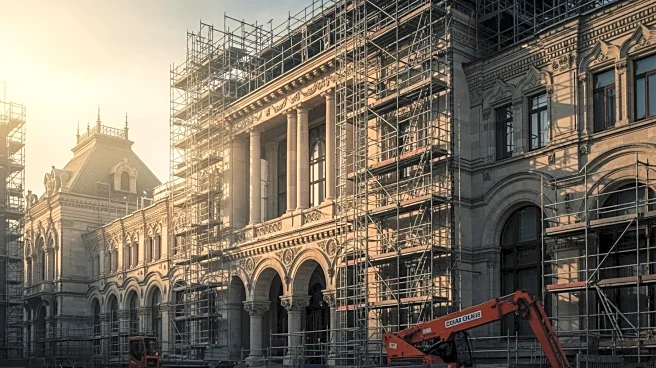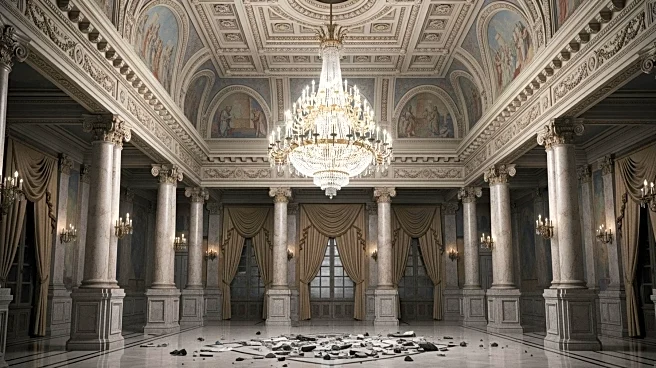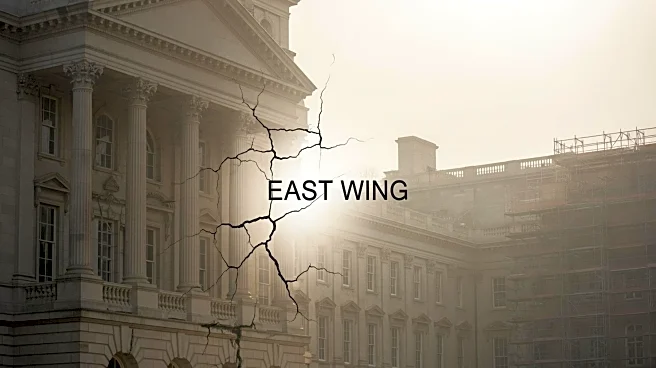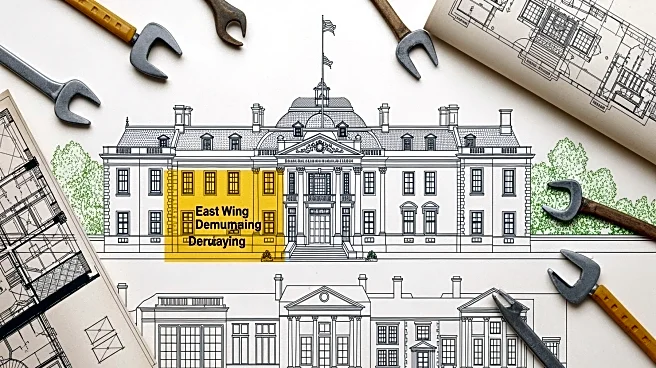What's Happening?
Satellite images have revealed extensive demolition at the White House, where construction has begun on a new ballroom. The images show the complete teardown of the East Wing, traditionally home to the first
lady’s offices, to make room for the ballroom. President Trump confirmed the demolition, contradicting earlier assurances that the wing would remain intact. The cost of the privately funded project has risen to approximately $300 million. White House press secretary Karoline Leavitt stated that the project’s scope expanded over time and urged Americans to trust the process, emphasizing transparency.
Why It's Important?
The demolition of the East Wing for the ballroom project has sparked significant controversy, with critics accusing President Trump of destroying a site of historical importance. The project, funded by private donors including major tech companies, has been criticized for its lack of transparency and for prioritizing luxury over historical preservation. The controversy highlights tensions between the administration and its critics, reflecting broader political and cultural divides. The project’s impact on the White House’s historical integrity and its symbolic significance as the 'people’s house' is a central concern.
What's Next?
The project is likely to face continued scrutiny from political opponents and preservationists. The administration may need to address legal and regulatory challenges, particularly regarding the lack of required review from a federal commission overseeing public building projects. As construction progresses, further updates and modifications to the project may be announced, potentially influencing public opinion and political discourse. Stakeholders, including lawmakers and civil society groups, may push for greater transparency and accountability in the project’s execution.
Beyond the Headlines
The ballroom project raises questions about the balance between modernization and historical preservation in government buildings. It also reflects broader themes of wealth and power, as the project is financed by private donors, including tech companies. The controversy may influence future decisions regarding renovations and construction at historically significant sites, prompting discussions on ethical considerations and public involvement in such projects.











